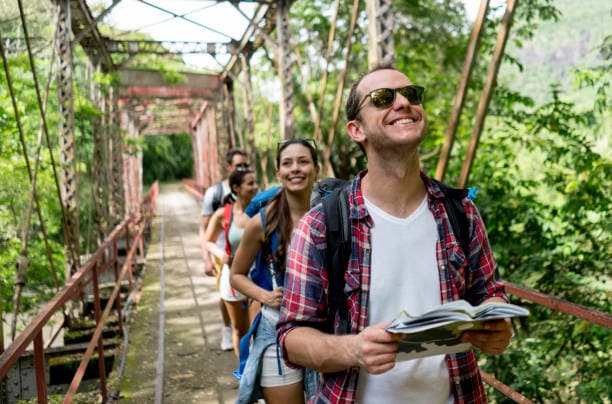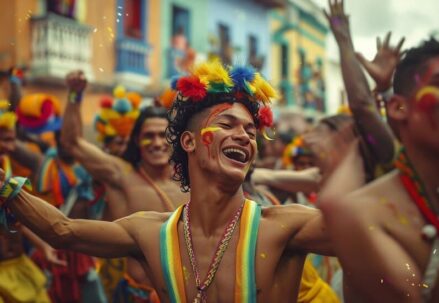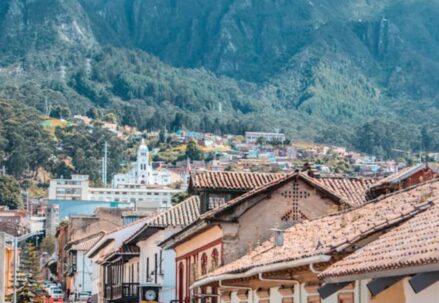Colombia is a breathtaking country, full of colour, rhythm, mountains, beaches, and some of the most welcoming people you’ll ever meet. But like any travel destination, it comes with its own set of safety challenges. Many tourists, especially first-time visitors, make simple but avoidable mistakes that can quickly turn a great trip into a stressful one.
Here are the top ten safety mistakes that tourists often make in Colombia — and how to stay smarter on the road.
1. Ignoring Local Advice
One of the most common and avoidable mistakes tourists make is brushing off local advice. Locals have grown up with an intuitive understanding of their cities — what areas are best avoided after dark, which neighbourhoods are fine during the day but risky in the evening, and what events might change the safety of a place overnight.
Many tourists mistakenly rely only on online maps or travel blogs and skip asking their hotel concierge, Airbnb host, or even a local shop owner for advice. This oversight can lead to entering areas with limited police presence, minimal lighting, or high petty crime. A few casual questions to someone who lives there can offer insight you won’t find on any app.
2. Flashing Valuables
Tourists sometimes forget that Colombia, like many other destinations, has its share of opportunistic thieves. Wearing expensive watches, dangling jewellery, or casually using the newest iPhone in public is an open invitation to pickpockets or street thieves.
Even in trendy or seemingly upscale districts, street crime can happen in seconds. Most incidents are non-violent but can be emotionally draining and logistically frustrating. Avoid displaying anything you wouldn’t want stolen, keep your camera in a bag when not in use, and consider using a cheap phone for street navigation.
3. Taking Unofficial Taxis
Hailing a cab off the street — especially late at night or in less central areas — can expose travellers to scams or worse. Some fake taxi drivers operate with the intent to overcharge, detour through unsafe areas, or collaborate with accomplices to rob passengers.
Instead of taking chances, use regulated taxi apps, which let you see driver info and routes in advance. Another option is asking your hotel or restaurant to order one for you. Taking that extra minute to plan your ride can save you a lot of trouble.
4. Walking Alone at Night in Quiet Areas
While cities like Medellín, Bogotá, and Cartagena have many areas with active nightlife, not all streets are equal after dark. Even a street that seems fine during the day can become deserted and risky at night. Thieves look for easy opportunities, and someone walking alone with no foot traffic nearby is exactly that.
Stick to well-lit streets with visible crowds, even if it means taking a longer route. If you’re out late, don’t be shy about ordering a ride — even for a short distance. It’s a small cost for added safety. In unfamiliar neighbourhoods, especially outside city centres, never assume quiet means safe.
5. Getting Too Comfortable Too Quickly
Colombian hospitality is real — and often makes visitors feel instantly at home. But while the friendliness is genuine, it’s important not to let your guard down too quickly. Being overly trusting with new acquaintances can lead to risky situations.
This might include giving out personal details, revealing your hotel location, or accepting drinks or invitations too readily. While many locals are welcoming and kind, scammers and opportunists know how to use charm. Stay friendly but cautious, especially in nightlife settings where alcohol and crowds make it easier for bad actors to operate.
6. Not Knowing the Local Scams
Every popular tourist destination develops scams over time, and Colombia is no exception. One common trick involves individuals posing as undercover police officers, asking to inspect your documents or wallet. In reality, they may use this as an opportunity to take cash or cards.
Another involves taxi drivers who pretend their meter is broken, then charge triple the regular fare. Street currency changers might perform a swap with counterfeit bills or short-change you intentionally. In busy markets or tourist zones, distractions like spilled drinks or street performers are sometimes used to divert your attention while an accomplice picks your pocket.
7. Using ATMs at Night or in Isolated Spots
While card payment is becoming more common, cash still rules in many parts of Colombia. That means withdrawing money is often necessary. But many tourists make the mistake of doing this late at night or from freestanding ATMs in poorly lit, low-traffic areas.
These ATMs are riskier for two reasons: they’re more prone to card-skimming devices, and they offer cover for someone looking to rob unsuspecting users. Instead, use ATMs inside shopping centres, large grocery stores, or bank branches during the daytime. Cover your PIN, and don’t let anyone offer “help”, no matter how friendly they seem.
8. Assuming English Is Spoken Everywhere
In cities like Medellín or Cartagena, you might hear a fair bit of English in hotels, restaurants, and tourist tours. But once you step out of those zones — even just to take a local bus or visit a small shop — you’ll find English is rare.
Tourists sometimes find themselves in awkward or even risky situations because they can’t explain a problem or understand what’s being said. In emergencies, that gap becomes even more problematic. Learning a few basic Spanish phrases such as “I need help”, “Call the police”, or “Where is the hospital?” can make a big difference.
9. Not Having a Backup for Documents
Losing your passport, bank card, or ID can be a nightmare in any country, but especially if you don’t have a copy or backup plan. Yet many travellers still carry everything in one wallet or bag—and then carry that everywhere with them.
It’s smarter to keep originals in a secure hotel safe and carry only photocopies or photos on your phone while out and about. Email yourself scans of key documents so you can access them from any device. Having a backup credit card stored separately from your main wallet is also useful if one gets lost or stolen.
10. Ignoring Weather and Terrain Risks
Colombia’s beauty lies in its variety — from Caribbean beaches to Amazon jungle to the high-altitude cities of Bogotá and Pasto. But that variety also comes with real environmental risks. Altitude sickness can affect even fit travellers after flying into high cities without time to acclimate. In the jungle, dehydration and insect-borne illness are a concern. On hiking trails, flash floods and steep, slippery paths pose dangers.
Tourists sometimes treat these conditions casually — hiking in flip-flops, forgetting sun protection, or underestimating how quickly the weather can change. Always check local forecasts, dress appropriately, and take local terrain seriously. A 20-minute hike might take twice as long on a steep, muddy slope, and a short afternoon walk in the sun could leave you sunburnt or dehydrated.




